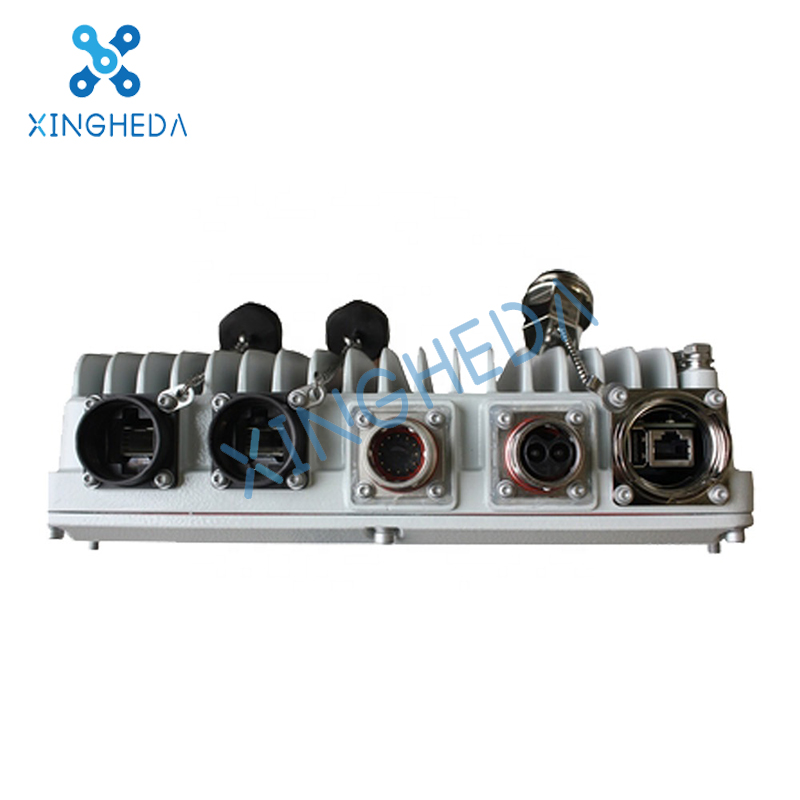Xinghe Da Technology Co., Ltd
Contacts:Jack Peng
Mobile:+86 18627553022
Whatsapp:+86 18627553022
WeChat: pengyi-changsha
E-mail:admin@chinaxingheda.com
Company address :2506 Xidi Building, No. 8 Fenglin Third Road, Yuelu District, Changsha City, Hunan Province
OLT,XPON-HUAWEI OptiX RTN 380 outdoor IP microwave transmission IDU equipment
Product Description
Network Positioning
The RTN 380 can provide large-capacity backhaul microwave links or aggregation links on a mobile communications network or a private network, or substitute for optical fibers to transmit CPRI signals between baseband units (BBUs) and remote radio units (RRUs) in a distributed base station system to achieve longer transmission of RRUs
Product Details:


Product Description
Network Positioning
The RTN 380 can provide large-capacity backhaul microwave links or aggregation links on a mobile communications network or a private network, or substitute for optical fibers to transmit CPRI signals between baseband units (BBUs) and remote radio units (RRUs) in a distributed base station system to achieve longer transmission of RRUs.
As E-band full outdoor radio equipment, the RTN 380 has the following characteristics:
The RTN 380 operates at 71-76 GHz or 81-86 GHz frequency bands. It features large capacity, low inter-site interference, and rich frequency spectrum resources, as compared with radio equipment that operates at 6-42 GHz frequency bands. Therefore, RTN 380s can form a backhaul network for base stations densely deployed in a city and provide large-capacity backhaul links for aggregation sites. In addition, the RTN 380 can provide high-bandwidth microwave links for transmitting Ethernet services on a metro optical Ethernet in areas where optical fibers are difficult to lay out.
As compact full outdoor radio equipment, the RTN 380 integrates all functions in a chassis and does not need an extra installation site. Therefore, it allows carriers to construct and operate networks at lower costs than traditional split radio equipment.
On a mobile communications network, RTN 380s are mainly used to:
Support protection such as PLA and 1+1 HSB. Provide large-capacity backhaul microwave links for 3G/LTE base stations especially those that are densely deployed in urban areas. See Figure 1.
Provide large-capacity aggregation links for 3G/LTE base stations and implement multi-direction aggregation when working with OptiX RTN 900s. See Figure 2.
Provide microwave links between BBUs and RRUs in a distributed base station system to transmit CPRI signals to achieve longer transmission of RRUs. See Figure 3.
Work with the CSG to provide a microwave channel solution for transparent transmission on the IP RAN. See Figure 4.
Work with OptiX RTN 900 to implement the Super Dual Band solution through EPLA. This solution provides high-bandwidth, long-distance, and high-availability backhaul links. Super Dual Band Relay extends the E-band link transmission distance to three times the transmission distance of a single-hop E-band link. See Figure 5.
Figure 1 Independently providing large-capacity backhaul links
Figure 2 Providing aggregation backhaul links
Figure 3 Longer transmission solution replacing optical fibers between BBUs and RRUs
Figure 4 RTN 380 working with the CSG
Figure 5 Super Dual Band solution
Specifications
RTN 380 specifications meet the high bandwidth requirements in E-Band microwave transmission. RTN 380 also has unique advantages in maintenance capabilities.
Table 1 lists the RTN 380 specifications.
Table 1 RTN 380 specifications
| Item | Specifications |
| Microwave types | IP microwave over native Ethernet and over PWE3 Ethernet Microwave carrying common public radio interface (CPRI) services |
| Frequency bands | 71-76 GHz and 81-86 GHz |
| Channel spacing | 62.5 MHz, 125 MHz, 250 MHz, 500 MHz, and 750 MHz |
| Modulation schemes | QPSK Strong, QPSK, 16QAM Strong, 16QAM, 32QAM, and 64QAM NOTE: In the co-channel dual polarization (CCDP) configuration, RTN 380 supports the highest modulation 16QAM. NOTE: The difference between strong modulation schemes and standard modulation schemes lies in encoding parameters. Strong modulation schemes have stronger FEC capabilities improving receiver sensitivity, but decreased air interface bandwidth. |
| Capacity | Maximum air capacity: 2.5 Gbit/s Maximum air-interface service throughput: 4 Gbit/s Maximum switching capacity: 8 Gbit/s |
| RF configuration modes | 1+0 mode 2+0 mode 1+1 HSB mode CCDP mode Multi-directional mode NOTE: In 1+1 or 2+0 mode, two OptiX RTN 380s are required for each site. When transparently transmitting CPRI services, RTN 380s cannot be configured in 1+1 HSB mode. |
| Channel configuration modes | Adjacent channel alternate polarization (ACAP) Adjacent channel co-polarized (ACCP) Co-channel dual polarization (CCDP) |
| AMAC | Supported |
| ATPC | Supported |
| Super Dual Band | Supported |
| PLA | Supported |
| Service ports | When Ethernet services are transmitted, 2 x FE/GE SFP ports and 2 x GE fixed electrical ports are supported, one of the electrical ports supporting Power over Ethernet. When CPRI services are transmitted, 1 x CPRI port is supported. |
| Service types | Ethernet services Native Ethernet services: E-Line service and E-LAN service PW-carried Ethernet services: E-Line service, E-Aggr service, and E-LAN (VPLS) service (VPLS standing for virtual private LAN service) CPRI services |
| QoS/HQoS | Supported |
| MPLS Tunnel | Supported |
| PWE3 | Supported |
| Clock features | Supported clock sources: Microwave link clock and Synchronous Ethernet clock IEEE 1588v2 time synchronization ITU-T G.8275.1 time synchronization |
| Power supply modes | Power over Ethernet, which supports power supply through the AC PI, DC PI or other specified power supply equipment |
| Dimensions (H x W x D)/Weight | 265 mm x 265 mm x 65 mm / 3.8 kg |
| Antennas | Dish antennas and flat antennas Dish antennas: available in diameters of 0.2 m, 0.3 m, and 0.6 m Flat antennas: available in models providing equivalent gain of dish antennas with diameters of 0.3 m |
A Free Consultation
You can contact us any way that is convenient for you. We are available 24/7 via fax, email or telephone.


